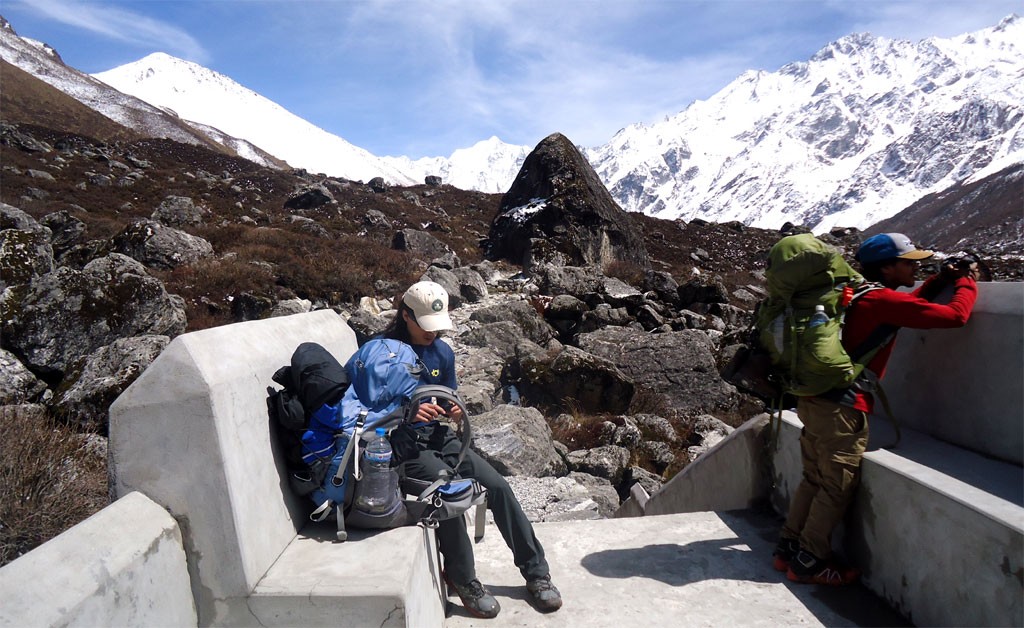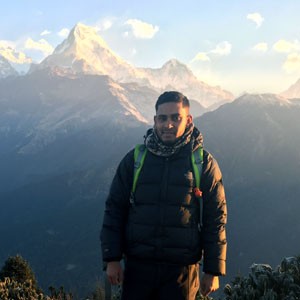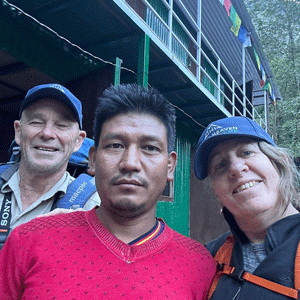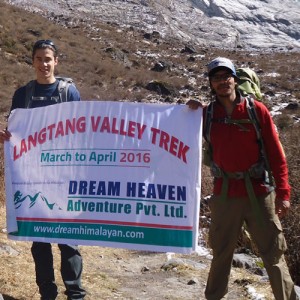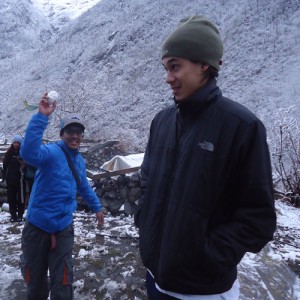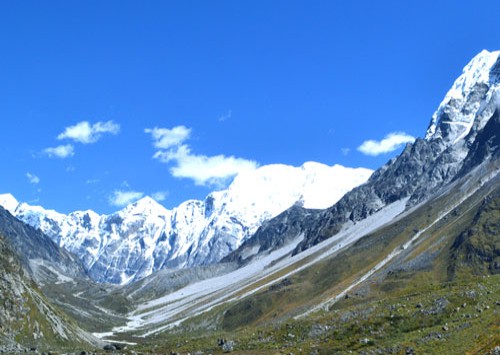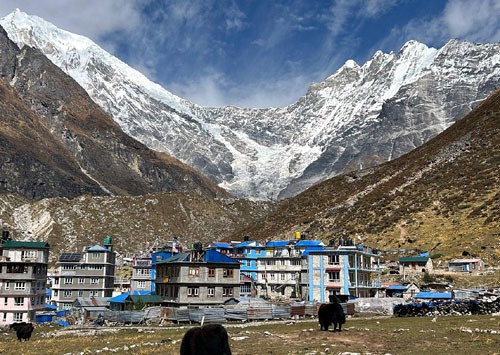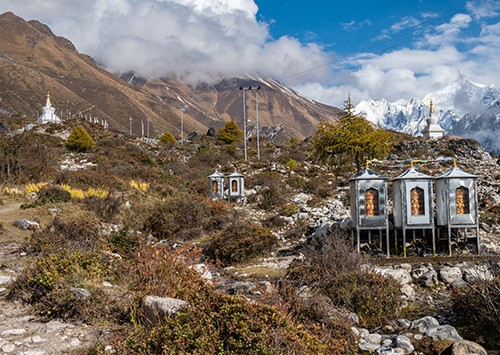Langtang Valley trek is a delightful walk via lush forests and picturesque villages in the Langtang National Park. If you are tempted by the famous Everest Base Camp trek and Annapurna Base Camp trek, the classic treks in Nepal, but looking for more equally adventurous options, then consider the Langtang Valley trekking. In just 8 days, you can complete the trek and return to Kathmandu. Enjoy the beauty of the Langtang Himalayas and a less crowded trekking route.
What to expect during the Langtang Valley trek 8 days?
Our Langtang Valley trek 8 days does not include Kathmandu arrival, so you have to be in the city at least one day before the trek begins. We will meet for trek briefing and packing a day before you leave for Syabrubesi. You will start and end the Langtang Valley trek in Syabrubesi. It takes around 8 to 9 hours to travel between Kathmandu and Syabrubesi.
Once you are at the starting point of the trail, you will begin walking deep inside the Langtang Valley. It is dominated by the Lantang Himalayas. The trail runs through beautiful rhododendron forests and small villages. You will spend nights in three major settlements along the way- Lama Hotel, Langtang Village, and Kyajin Gompa.
Kyanjin Gompa is the last settlement during the Langtang Valley trekking. From here, you will go on a side hike to Tserko Ri, which is a viewpoint that presents jaw-dropping mountain vistas and a wonderful sunrise. As you trek from Syabrubesi to Kyanjin Gompa, you will pass by different terrain and climatic zones. So, you will see diverse flora and fauna.
On the Langtang Valley trek route, Tamangs and Sherpas communities reside. The journey is definitely culturally rich as you get to see their lifestyle and traditions and explore ancient stupas along the trail. Similarly, explore yak pastures and local cheese factories. Himalayan bear, musk deer, langur monkeys, red pandas, etc, are some of the natives of the Langtang region.
Why do the Langtang Valley trek in Nepal?
The sheer beauty and less crowded trails are some of the top reasons that make trekking in the Langtang region remarkable. Not only that on this short trek, you will get to witness several mountains like Ganesh Himal (7,422 m/24,350 ft), Gaurisanker (7,134 m/23,405 ft), Langtang Lirung (7,234 m/23,734 ft), Kang Guru (6,981 m/22,903 ft), Ganchenpo (6,387 m/20,955 ft), etc.
Likewise, the Langtang Valley trek is perfect for travelers looking to enjoy nature but do not want to spend long trekking or traveling in far Himalayan regions. You will not see Mt. Everest on this trek, but other than that, the Langtang Valley trek 8 days is nothing less than any famous trekking route in Nepal. Likewise, the trek is not very difficult either.
How to prepare for the Langtang Valley trek?
After you book the trek with us, you will start preparing for the trip. Our team will send you a preparation checklist. Your top goal should be making yourself physically active so you can walk 6 hours a day.
There are many things that you can do for physical preparations, like strength training, swimming, cycling, running, hiking, etc. Regular walks are highly recommended and wear a backpack weight 5 kg while walking.
Langtang Valley trek packing list
For the Langtang Valley trekking, you will need some trekking clothes and gear. We have made a general packing list below. Our team will send you a comprehensive packing checklist after booking.
- Trekking clothes: Breathable underwear, base layer, trekking shirts, trekking pants, fleece, down jacket, windcheater, raincoat, socks, gloves, beanie, scarf, sunhat, trekking shoes, casual shoes/slipper, dry towel, etc
- Trekking poles and map
- Reusable water-bottle and water purification tablets
- Daypack and duffel bag (we lend our guest duffel bag to use during the trek free of cost)
- Toiletries: Suncress, lip balm, moisturizer, toilet paper, deodorant, shampoo, soap, wet tissue, toothbrush/toothpaste, dry bags/zip lock bags, etc
- Adapter, charger, power bank, snacks, camera, journal/pen (optional), first aid kit, etc
Why do the Langtang Valley trek with Dream Heaven Adventure?
You get the best Langtang Valley trek cost, the perfect itinerary, a customization option, native guides and porters, and many other perks by doing this with us, Dream Heaven Adventure. Our team of professional travelers who have been working in the travel industry of Nepal for several years promises a safe, satisfying, and hassle-free experience.
Join our Langtang Valley trek 2024 departure and get the best deal in the market!
Advice for trekkers
- Set aside extra money each day for the trek. You will need money for personal expenses like hot showers, WiFi, charging, and extra food and drinks.
- Do not touch or eat unknown leaves or plants. Do not drink water directly from a stream or tap. You may not digest it.
- If you come across yaks or mules along the trail, let them pass first and you stay on the cliffside and not on the edge.
- Tipping guide and porter are standard practice in Nepal. You should allocate some money for that. 10-15% of the package cost is a decent number to tip.
- Not many trekkers know, but Langtang Valley winter trekking is fantastic. If you can handle the cold, you must try a winter trek in Nepal.
- Bring used trekking boots for the trek instead of brand-new pairs to avoid blisters. You can buy your trekking boots early and use them before the trek starts.
